9 eCommerce Sales Strategies To Skyrocket Your Sales In 2024

Global online retail sales are expected to reach $5.9 trillion by 2024, intensifying the need for a strong eCommerce sales strategy to stay competitive.
So, in this article, we will explore powerful strategies to help you tap into this booming market. By the end, you will have a toolbox full of tactics and tools to bring your eCommerce brand to new heights and increase your sales.
Ready to gain insights? When you’re not checking on all your live sports bets this season with Golden Camel before game time, let us grab a few minutes of your time to show you just what you need to know first. Let’s get to it.
9 Must-Know Strategies To Increase eCommerce Sales
List the tried-and-tested actionable points in each strategy and review them at the end to see which tactics you can apply ASAP to generate sales.
1. Transform Your Product Pages Into Conversion Powerhouses
You’ll lose 88% of your online customers if your store provides a bad experience to them. So to give them a better experience, you need to optimize your product page to give them an overview of what you offer.
Enhance each product page—from images to descriptions. With this, you can turn casual browsers into paying customers.
Do the following:
A/B Testing
A/B test your product page with Google Optimize or Optimizely. To find the best-performing option, you can test different elements, including CTAs, images, and headlines.
RIPT Apparel, for example, tested 3 versions of their product page’s CTA button. Through A/B testing, they found that the 3rd one, highlighting a 24-hour sale, sparked a 6.3% increase in sales. This minor change in a CTA works because it creates a sense of urgency, driving more conversions.
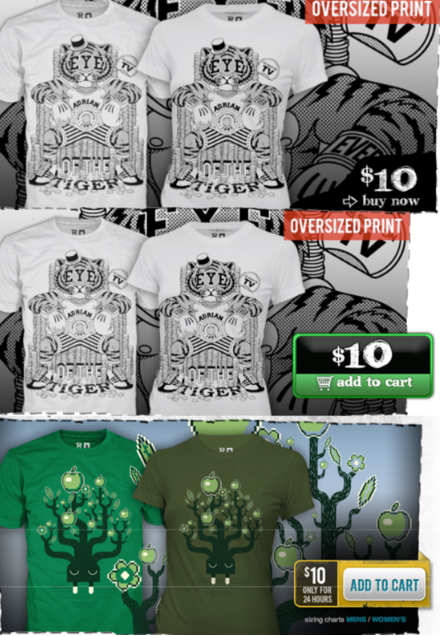
Improve Visuals
Display your products from different angles using high-quality product videos and images. Make sure they have good lighting so customers can see each detail clearly. To create your graphics, leverage editing tools like Canva. Offer a zoom feature and multiple views, too.
Include Social Proof
Display reviews or ratings on your product page to let other users see how credible your items are. To get your social proof, send follow-up emails post-purchase to encourage customers to leave reviews or add a feedback form directly on your eCommerce websites. Use tools like Yotpo to collect, manage, and display your reviews automatically.
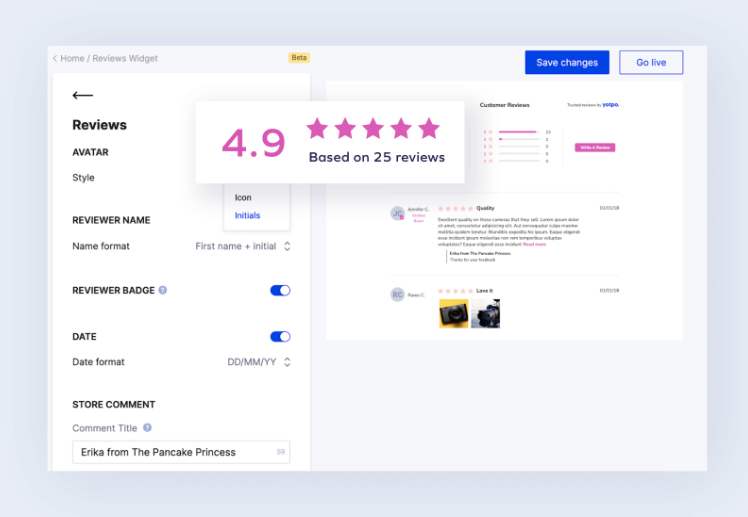
Example & Application
My favorite example is this product page at Golf Cart Tire Supply. They effectively use detailed, high-resolution images with the option to zoom in to highlight their tires’ quality and durability. This visual emphasis helps customers make informed decisions and reduces the likelihood of returns since they see every detail very clearly.
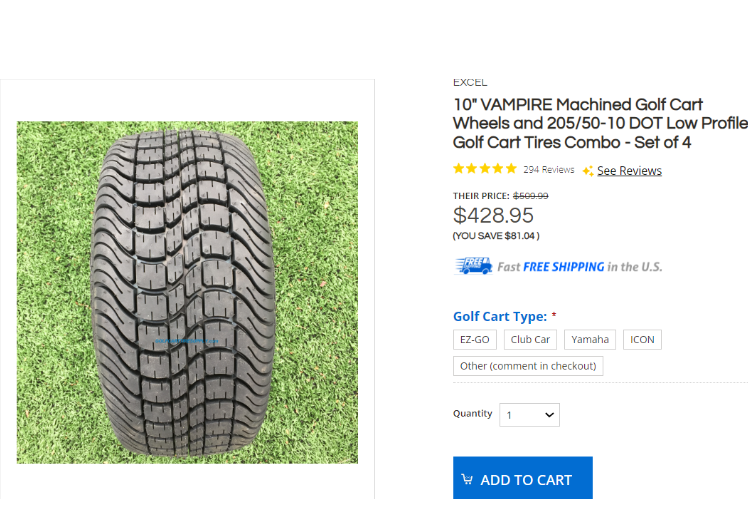
Plus, they showcase real customer reviews (as shown below) prominently on their product page. These reviews make the customers confident in their choices and help build trust.
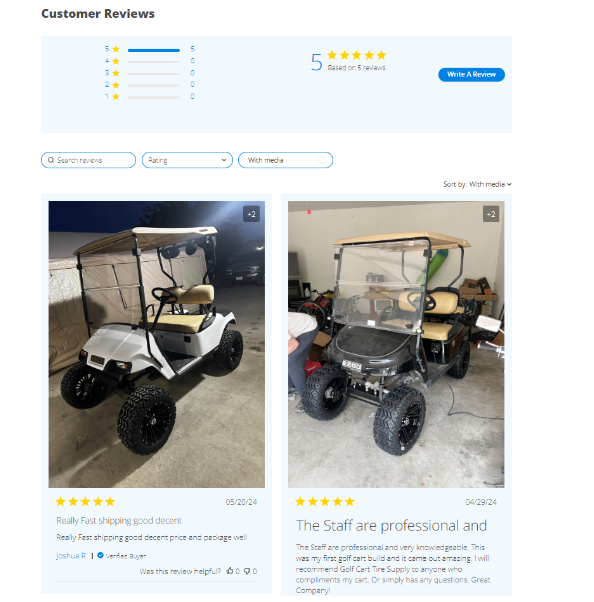
To further improve your product pages, ReadyCloud’s CRM capabilities can help you. The tool is ideal for tracking customer interactions on your product page, and it offers insights to help you optimize your product for better conversion rates.
For example, you can use it to analyze which products are viewed most frequently and how customers interact with your product reviews. Use this information to refine your product page to highlight customer favorites.
2. Engage Customers With Smart Email Marketing To Boost Sales
Email marketing offers an ROI of $42 on every $1 spent, making it one of the best ways to communicate with your customers. This eCommerce strategy convinces your existing customers to make repeat purchases by keeping your brand at the top of their minds.
Do the following:
Segment Your Audience
Segment your email lists according to your customer’s purchase history and customer behavior. This will make it easier for you to send personalized recommendations and offers that increase your eCommerce sales.
Personalization
One way to significantly improve your sales emails is to personalize them with the customer’s name and recommend products based on browsing history. You can use the data from your chosen email marketing tools to seamlessly do this.
For example, if a customer recently browsed winter jackets on your site, send them an email addressing them by name and featuring the exact jacket they viewed. Plus, you can add a selection of related winter accessories they might like.
Automation
Create automated email sequences for post-purchase follow-ups, cart abandonment reminders, and welcome messages. This guarantees consistent communication with your customers without requiring manual effort.
Here’s what the sequence looks like in ActiveCampaign:
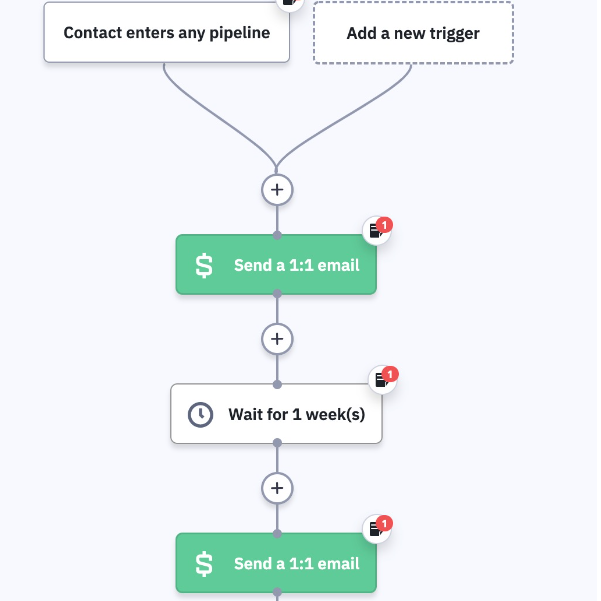
Example & Application
Simply Beach effectively segments its email marketing campaigns by customer purchase history, which lets them send personalized recommendations and offers.
For example, if you bought a dress from them previously, they’ll send you an email for their new summer dress collection (as shown below). On the other hand, if you buy swimwear, they can send you emails about their new special designer collection for the season.
You’ll considerably increase your open rates and conversions, consequently increasing your online store’s sales.

To make sure your emails are not flagged as spam and reach your customer’s inboxes, properly authenticate your email headers. They contain technical information that helps email providers verify the sender’s identity.
By using protocols like SPF, DKIM, and DMARC, you can increase the likelihood that your emails will be delivered successfully and avoid being sent to the spam folder.
3. Supercharge Your Sales With Cross-Selling & Upselling
Some businesses, like those in the SaaS landscape, enjoy 70-90% of revenue from cross-selling and upselling alone. With this strategy, you encourage your customers to buy additional products or premium versions, increasing your average order value (AOV).
Here’s how to implement it:
Product Recommendations
Suggest related products on your product page and during checkout with recommendation engines like Nosto. Focus on enhancing your product’s value and cross-sell complementary items or accessories accordingly. For example, if a customer is purchasing a foundation, you can cross-sell a matching setting powder or a complementary makeup brush.
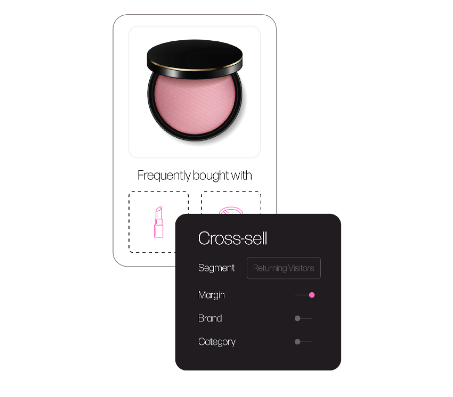
Bundle Offers
Award high-value orders with discounted bundle offers. To do this effectively, analyze your sales data to identify best-sellers or frequently bought-together items.
For example, if you’re using Shopify, you can access detailed sales reports like “Sales by products” and “Sales by product variant.” You should also consider bundling your popular products with less popular ones to increase the latter’s visibility.
You’ll encourage your customers to spend more in your online store by bundling related items. Also, it encourages them to try other products that your brand offers. This approach helps them discover new items they may like, which can help increase customer satisfaction and loyalty.
Post-Purchase Offers
Send follow-up emails with recommendations for complementary products using your data from ReadyCloud CRM. You can use insights from past purchases to tailor these suggestions for each customer.
For example, you can direct your customers to your grinder, coffee filters, or coffee beans pages via a follow-up email if they’ve recently purchased a coffee maker.
Example & Application
Main Clinic Supply has an excellent example you can follow. For its G4 portable oxygen concentrator, they offer 3 upgrade bundles that come with many add-on benefits like an insured power surge protection worth $5000 and a large battery.
This offers your customers a convenient shopping experience, which encourages them to spend more on your products or services. Plus, it saves them money. Instead of paying for insurance or baggage fees each trip, the bundles cover it all.
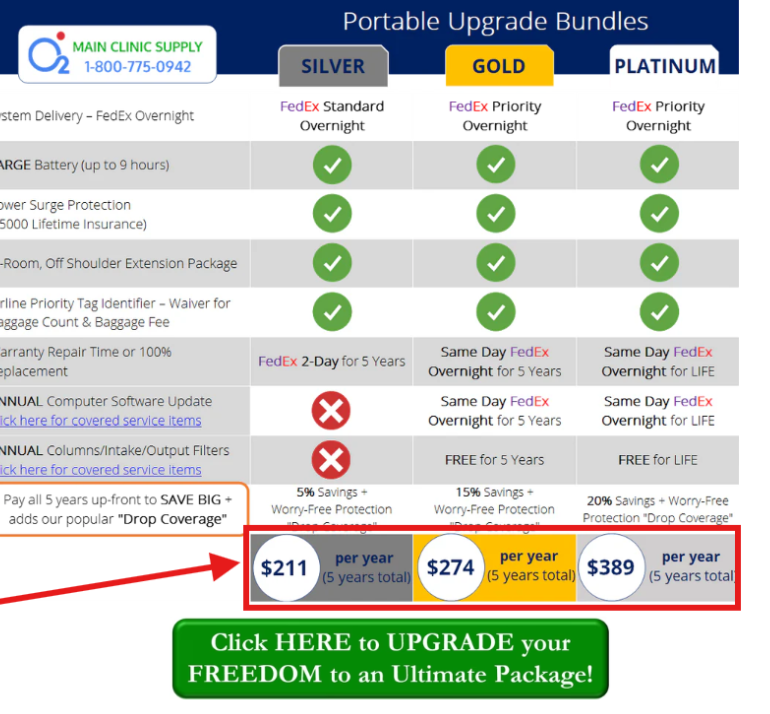
Again, ReadyCloud CRM perfectly applies here as well. This platform makes it easier to implement cross-selling and upselling strategies with its tracking features for customer behavior and preferences.
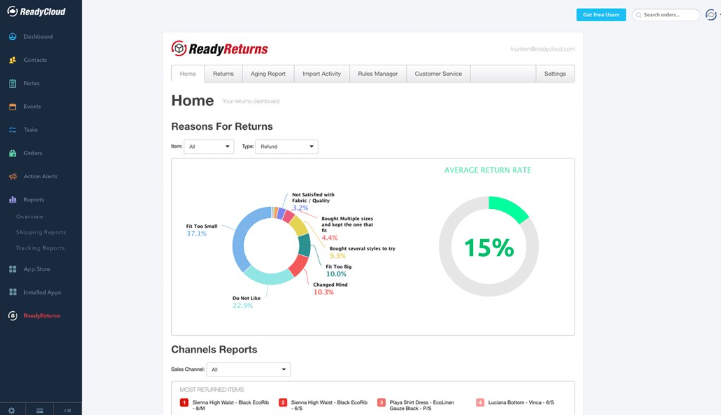
Also, purchase history and customer interactions let you tailor your recommendations and paid ads to each customer. With this, you increase the likelihood of conversion and your overall revenue.
4. Go Mobile Or Go Home: Optimize For On-The-Go Shoppers
Smartphones are behind 79% of online purchases.
Online shoppers enjoy a more seamless experience if you have a mobile-optimized eCommerce site. It can reduce cart abandonment and increase conversions since they can navigate your store easily, making it easy for them to click and buy.
Do the following:
Create A Responsive Design
Make sure your eCommerce website can adapt to different screen sizes and is completely responsive. If you’re unsure about your website’s mobile usability, use Google’s Mobile-Friendly Test. Shopify and WordPress are great tools for responsive designs since their themes automatically adjust for different screens.
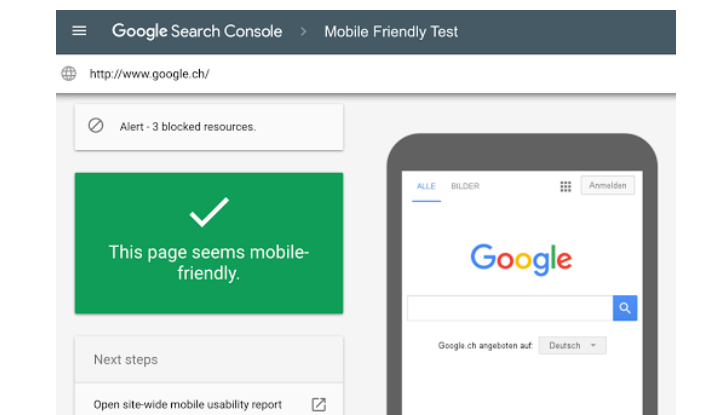
Simplified Checkout
Streamline the checkout process for mobile users by minimizing steps and reducing friction. Implement one-click payment options with Google Pay or Apple Pay to improve their overall mobile shopping experience.
Improve Your Site’s Load Time
Use Cloudflare or any other content delivery network (CDN) to optimize your mobile site’s load time. Plus, make sure the size, dimensions, and placements of your images are also mobile-friendly. Here’s a visual representation of Cloudflare by Purple Dog.
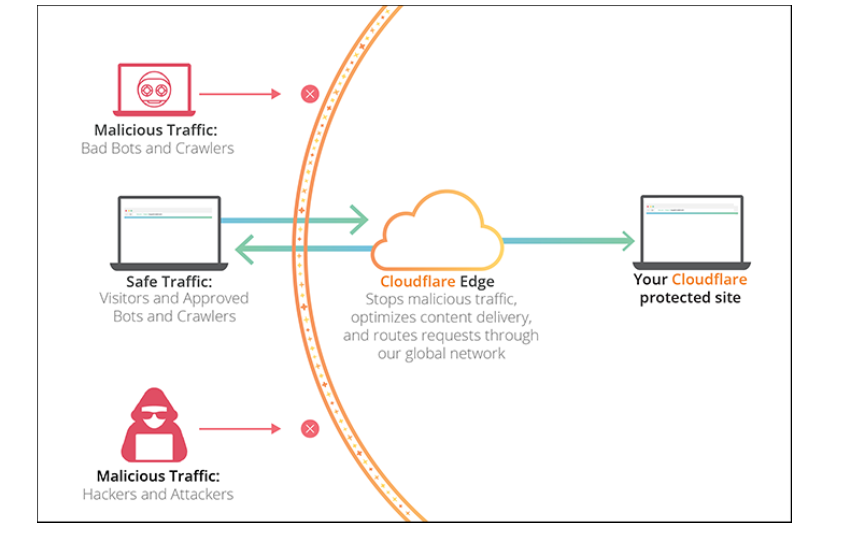
Additionally, compress your images with TinyPNG and monitor your site’s speed with Google PageSpeed Insights. This reduces bounce rates and keeps your users completely engaged.
Example & Application
ASOS has optimized its mobile site to offer a seamless shopping experience with quick sign-up options. The brand has streamlined its mobile checkout process to let users make purchases quickly and efficiently with minimum steps.
This mobile site features intuitive navigation and quick load times, making it highly responsive. This contributes to higher conversion rates and lower cart abandonment.
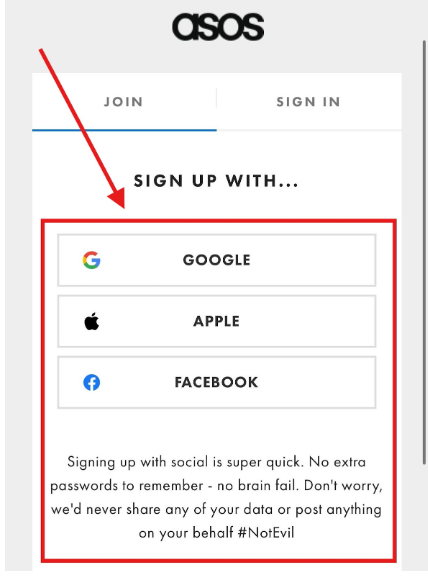
To achieve the same success as ASOS’ mobile site, prioritize the use of a content delivery network (CDN) like Cloudflare. Cloudflare offers quick load times and reduces latency with the help of a CDN. This helps keep your users engaged and reduces your bounce rates.
5. Dominate Search Rankings & Increase eCommerce Sales With Savvy SEO Tactics
About 53% of your eCommerce website visitors come from organic searches. This makes it obvious that you can grow your business and see an increase in your overall profits with a solid SEO strategy.
You can make your website appear higher on search results pages, increasing your brand’s visibility with a well-thought-out SEO strategy. This means that your online store will get more organic traffic.
Do the following to achieve the results your business needs:
Look For Profitable Keywords
Use SEMrush or Ahrefs to find relevant phrases and keywords your target audience uses to find what they’re looking for. Find keywords with a low cost-per-click and competition. These should have a considerable amount of searches already. Lastly, make sure they align with your service or product.
The key to improving your rankings on search results pages and increasing your website traffic is targeting the exact words your customers use on search engines. Additionally, understanding the intent behind keywords helps you create specific content that meets exact customer needs.
On-Page Optimization
Use All in One SEO to optimize your meta tags, blog posts, and product pages with your target keywords. This means integrating keywords in your header tags, meta descriptions, and title tags.
By doing this, you can make sure that your potential customers find you without any trouble. This will give your site better visibility. Additionally, well-optimized pages create better user experiences through relevant information that matches what users are searching for.
This keeps visitors on your site longer and increases the chances of them taking action, such as signing up for your newsletter.
To achieve the same success as ASOS’ mobile site, prioritize the use of a content delivery network (CDN) like Cloudflare. Cloudflare offers quick load times and reduces latency with the help of a CDN. This helps keep your users engaged and reduces your bounce rates.
5. Dominate Search Rankings & Increase eCommerce Sales With Savvy SEO Tactics
About 53% of your eCommerce website visitors come from organic searches. This makes it obvious that you can grow your business and see an increase in your overall profits with a solid SEO strategy.
You can make your website appear higher on search results pages, increasing your brand’s visibility with a well-thought-out SEO strategy. This means that your online store will get more organic traffic.
Do the following to achieve the results your business needs:
Look For Profitable Keywords
Use SEMrush or Ahrefs to find relevant phrases and keywords your target audience uses to find what they’re looking for. Find keywords with a low cost-per-click and competition. These should have a considerable amount of searches already. Lastly, make sure they align with your service or product.
The key to improving your rankings on search results pages and increasing your website traffic is targeting the exact words your customers use on search engines. Additionally, understanding the intent behind keywords helps you create specific content that meets exact customer needs.
On-Page Optimization
Use All in One SEO to optimize your meta tags, blog posts, and product pages with your target keywords. This means integrating keywords in your header tags, meta descriptions, and title tags.
By doing this, you can make sure that your potential customers find you without any trouble. This will give your site better visibility. Additionally, well-optimized pages create better user experiences through relevant information that matches what users are searching for.
This keeps visitors on your site longer and increases the chances of them taking action, such as signing up for your newsletter.
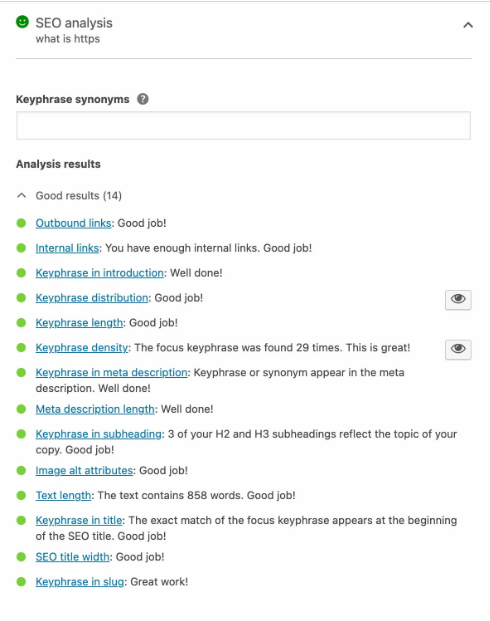
Content Marketing
Focus on positioning your brand as an authority and answering your customers’ questions with high-quality content. Create engaging visuals for your content with Adobe or Canva and update your blogs with new keywords and SEO practices at least every year.
Build An SEO Team
Build a team of SEO specialists to maintain and continuously improve your website’s search engine rankings. They can help you craft a strong SEO strategy and make sure your site meets Google’s latest standards.
A well-rounded SEO team can focus on creating and optimizing content through deep keyword research, managing technical SEO, and monitoring performance metrics. This will help you create sustainable growth opportunities for your business with aligned business goals and SEO efforts.
Example & Application
Neil Patel Digital is well-known for leveraging SEO to drive massive traffic. The website focuses on keyword research, optimizing on-page content, and consistently pushing high-quality blogs. Neil Patel built a website that ranks for numerous competitive keywords in the digital marketing space.
This is why they can bring 44% of their website traffic and visitors through organic searches.
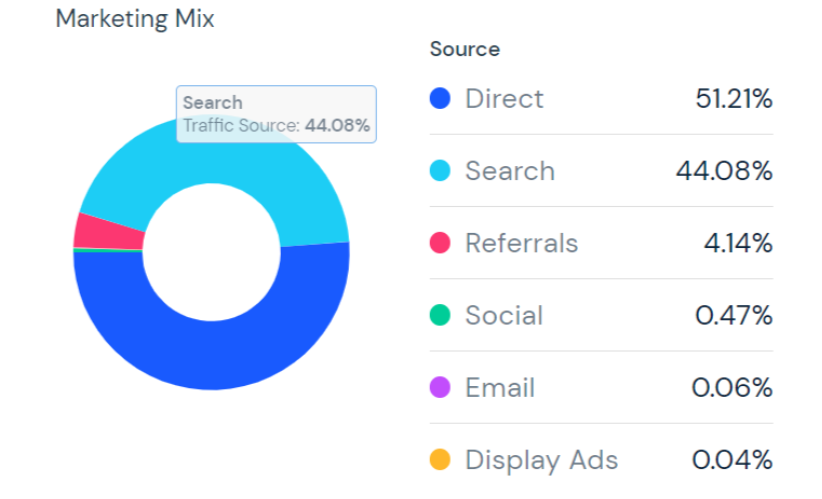
To get your eCommerce site in the right direction, you have to choose a platform that covers all SEO elements. For example, Moz lets you do comprehensive SEO management with its keyword research, site audits, and backlink analysis features. This makes tracking and improving your site’s search engine rankings easier.
The tool’s robust features are ideal for an eCommerce business looking for detailed insights into their SEO performance to make data-driven decisions for better online visibility.
6. Seal The Deal For Your eCommerce Business With Seamless Payment Solutions
9% of customers abandon their carts because of the limited payment options.
To increase your conversion and reduce cart abandonment rates, offer your customers multiple payment options to suit the preferences of varying customer types. Offering diverse payment methods also builds trust with your customers, making sure they can choose a payment option they feel comfortable with.
It also shows that your business is customer-centric, prioritizing convenience and accessibility.
Here’s what to do:
Provide Multiple Payment Options
Add Google Pay, Apple Pay, or any other digital wallet with the standard PayPal and debit/credit card payment options. You should also offer buy now, pay later (BNPL) options like Shop Pay, Afterpay, and Klarnato to let your customers make installment payments.
This type of payment option is crucial as it lets customers purchase higher-ticket items without paying the full amount upfront. With this, you’re making your products more accessible to a broader audience.
You can significantly increase repeat purchases and reduce your cart abandonment rate with these flexible payment solutions. So make sure that your payment options are clearly displayed on your site so your customers know their preferred payment method is available.
Secure Payment Gateway
Use a secure and user-friendly payment gateway like Authorize.net to process transactions. A reliable payment gateway builds trust and reduces friction during the checkout process. Plus, knowing that their data is secured helps your customer feel more confident when doing transactions in your store.
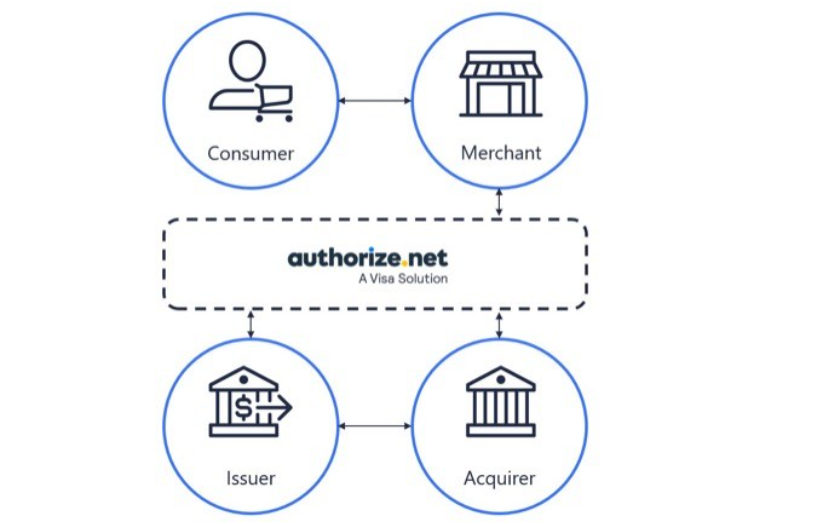
Example & Application
Vinyl Status excels by offering a wide range of payment options like Google Pay and Afterpay. They increase customer experience by integrating these payment methods seamlessly on checkout pages. This approach offers startups a model for effectively catering to diverse customer preferences and creating a smooth, flexible checkout process.
Vinyl status prioritizes convenience and strategically uses its diverse payment options to build customer loyalty and trust. Their approach addresses potential customer hesitations, particularly with higher-value purchases.
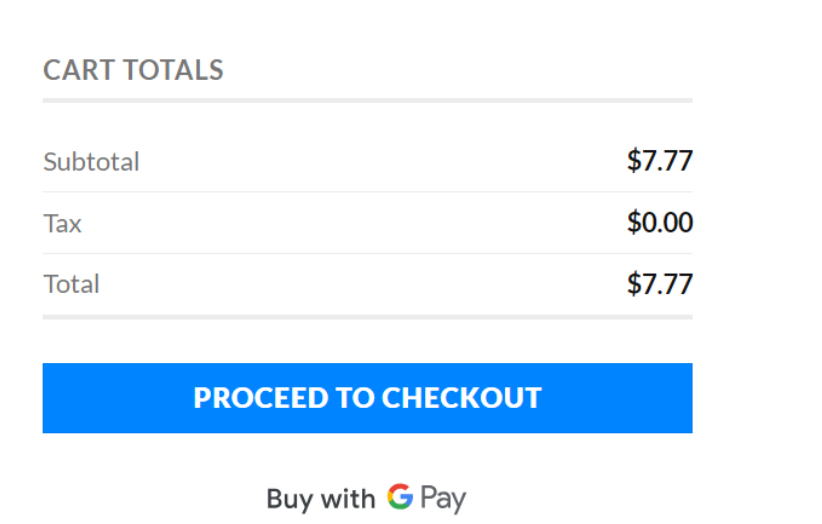
A versatile payment solution to consider is Square. It offers installment plans, digital wallets, and standard debit/credit card payment options.
Square’s seamless integration with eCommerce platforms makes it an excellent choice for businesses looking to provide diverse payment methods and a smooth checkout experience.
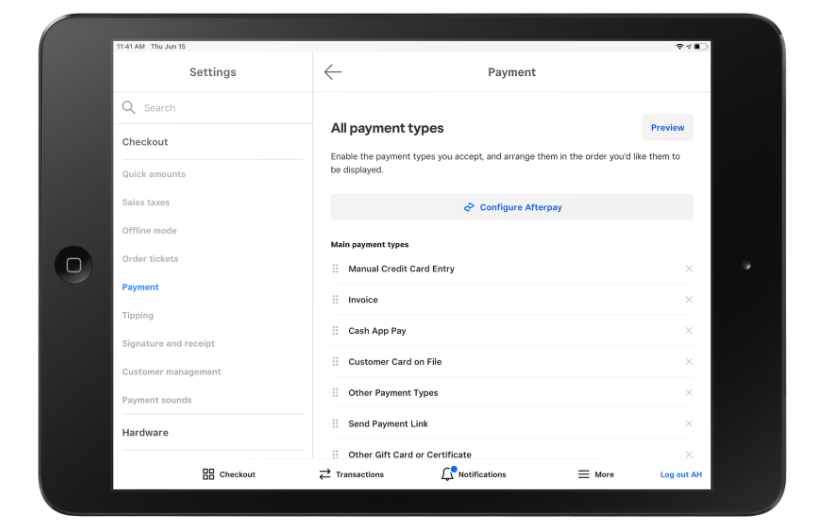
7. Engage & Educate With Powerful Video Marketing
A brand’s videos can convince 82% of consumers to buy its products or services.
Video marketing helps convey complex information more easily and effectively than texts or images alone. It can demonstrate product features, show how a product is used, and provide excellent customer service and testimonials.
Here are tactics to remember:
Product Demos
Show your potential customers how they can use your services or products in the real world with product demonstration videos. You can use Wistia or Vimeo to make these videos. To make sure your customers understand the usage and value of your product, embed these videos on your product pages.
Customer Testimonials
Build credibility and trust by highlighting satisfied customers’ video testimonials. Use Zoom or another video conferencing tool to record an interview with them and edit it to highlight the most compelling moments. Share these on your marketing channels to showcase authentic customer experience.
Social Media Marketing
Share short, engaging videos on social media to grab your audience’s attention and increase your web traffic. Social media platforms increase visibility and sales with catchy visuals and videos. You can also integrate them on your website with third-party apps like Shopify’s Video Embed App.
Example & Application
Pergola Kits USA‘s detailed videos are a perfect example of how to guide customers regarding your product’s use and installation. You can use such videos to make purchasing decisions easier and enhance customer confidence.
These videos include close-up shots of their product and demonstrate how to set it up in real life. This reduces any uncertainty customers might have about how the products look in an outdoor setting. Ultimately, this increases their confidence to finally buy.
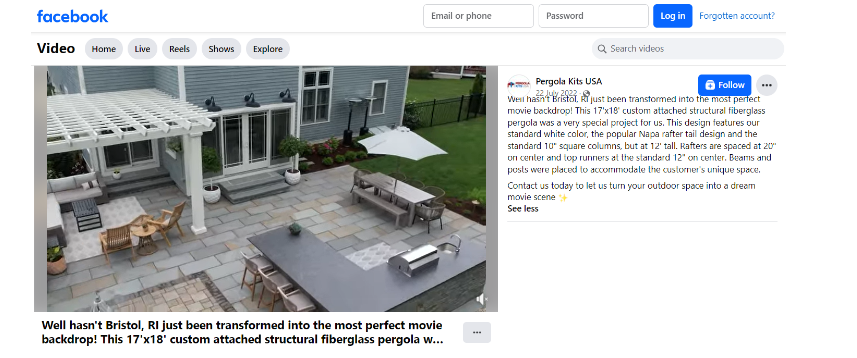
8. Build Trust With User-Generated Content (UGC) Magic
UGC impacts 79% of buyers’ purchasing decisions.
Since UGC comes from real-life customers who have used your service or products, it helps build brand authenticity and trust.
Here are some useful techniques:
Encourage Content Creation
Offer your customers discounts or early access to upcoming releases to encourage them to share how they use your services or products. Launch social media campaigns or contests to make this more engaging. This approach engages your audience and generates user-generated content, which helps build authenticity for your brand.
Here’s how to get started:
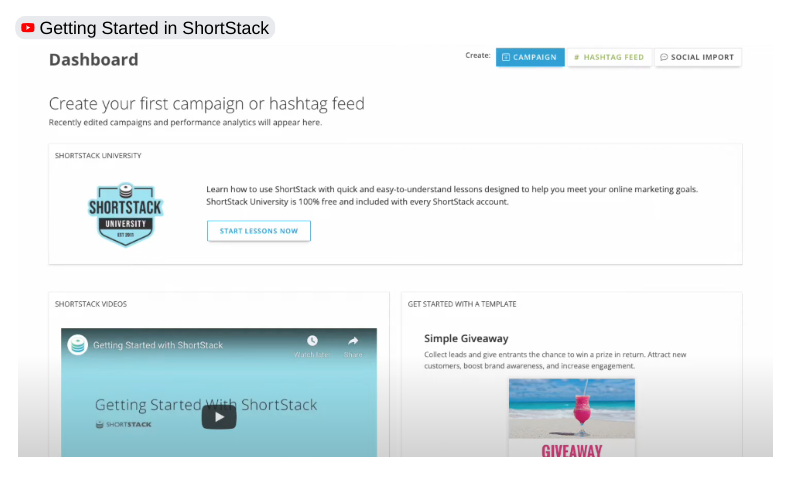
Create A Hashtag
Curate and collect UGC from various platforms using a branded hashtag. This makes it easier to track the UGC content and adds convenience for your customers who are willing to share their experiences. Use ShortStack to run your branded hashtag campaigns and Brand24 to track UGC content.
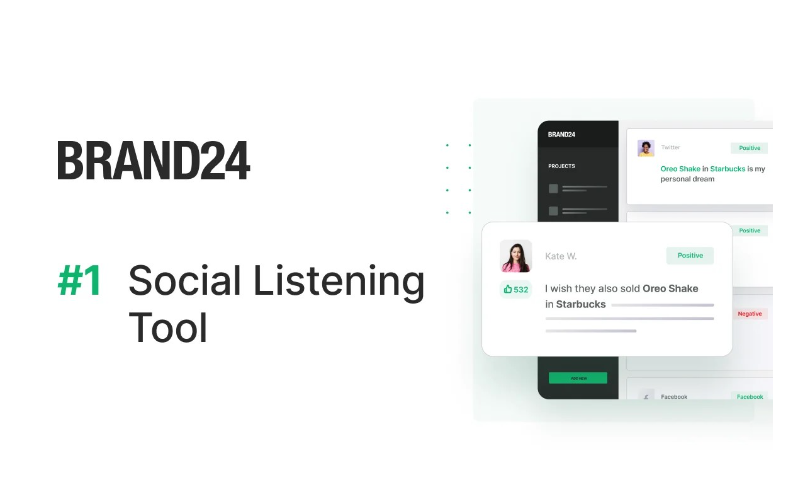
Example & Application
Glossier effectively leverages UGC to build authenticity and trust. They encourage customers to share their photos using the hashtag #GlossierIRL, showcasing how the products look on real people.
These photos offer potential customers examples of how to use the brand’s products. Glossier also features them on their social media channels and product pages for better visibility
The brand connects its audience through shared experiences and creates a strong community of loyal customers using this strategy.
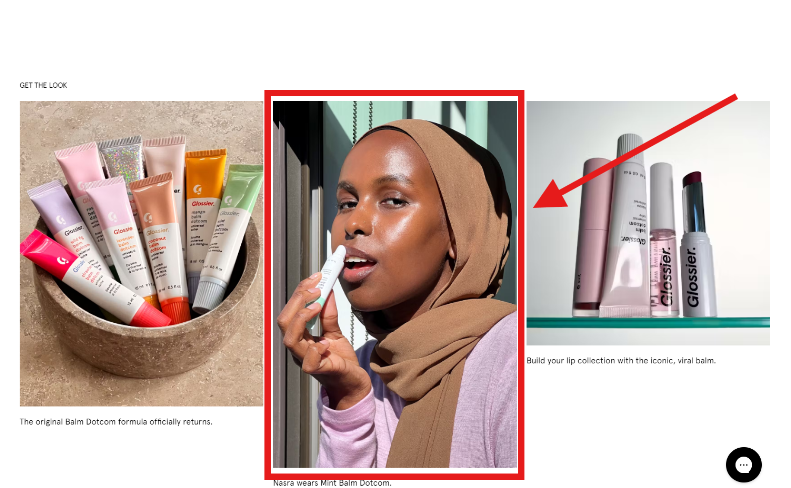
Use TINT to collect, curate, and display UGC from many different social platforms. You can aggregate UGC using this tool, customize the display to match your brand’s aesthetics, and embed it directly on your website. This is ideal for creating an engaging and visually cohesive brand experience.
Alternatively, use Yotpo to curate and display UGC specifically on your product pages and social media channels. This tool strengthens brand credibility and builds a community for its customers by highlighting customer videos and photos. It’s particularly effective in showcasing how customers enjoy and use your services or products.
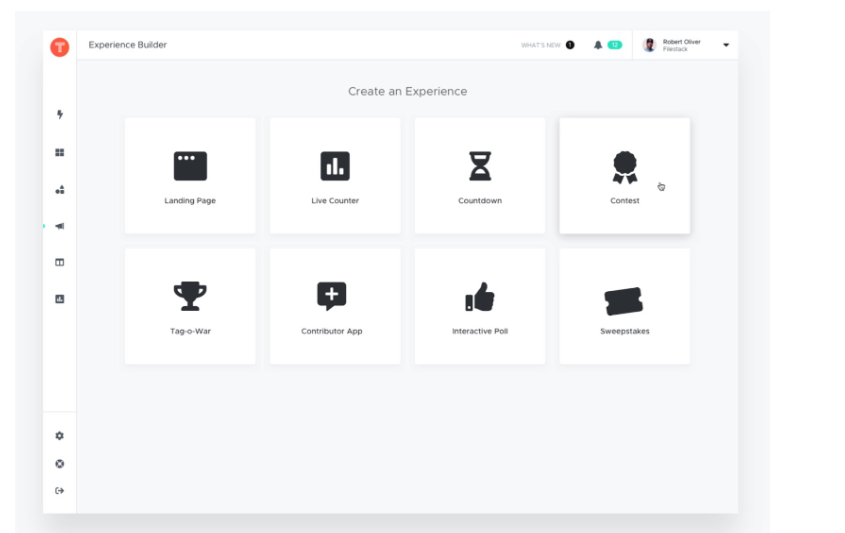
9. Personalize Like A Pro: Using Data To Delight Customers
Personalized experiences drive 80% of customers to buy a product or service from online retailers.
Use individual customer data, like past interactions, preferences, and behavior, to tailor their shopping experience. Use this strategy to achieve higher conversion and engagement rates.
Here’s how it’s done:
Track Customer Behavior
Understand your customers’ purchasing and browsing behaviors with data analytics tools. You can personalize your customer’s shopping experience based on this data with the help of detailed insights from Google Analytics.
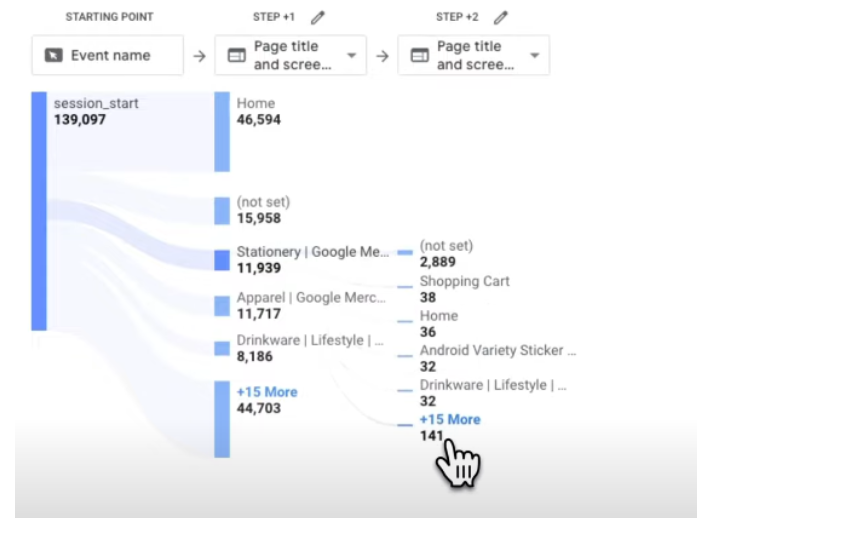
Personalized Recommendations
Based on past purchases or browsing history, offer product recommendations on your homepage, product pages, and email campaigns. For instance, you can send your customers recommendations for your workout apparel, straps, or yoga blocks in a post-purchase email if they recently purchased a yoga mat from you.
You can do this through automated algorithms that analyze customer data and predict their preferences.
Dynamic Content
Make your website more engaging with dynamic content, which is content that changes according to the visitor’s location, preferences, or past behavior. For example, you can display different homepage banners or product recommendations depending on whether a visitor is a first-time visitor or one of your returning customers.
With this, you can make sure that the content is relevant to each user, increasing the likelihood of conversion.
Example & Application
You’ll find a great example of how you can improve personalization with data analytics if you analyze Netflix. They leverage user data to personalize TV show and movie suggestions according to individual customers’ preferences and viewing history.
A personalized approach of this level will considerably increase your:
- Retention
- Customer Lifetime Value
- Engagement
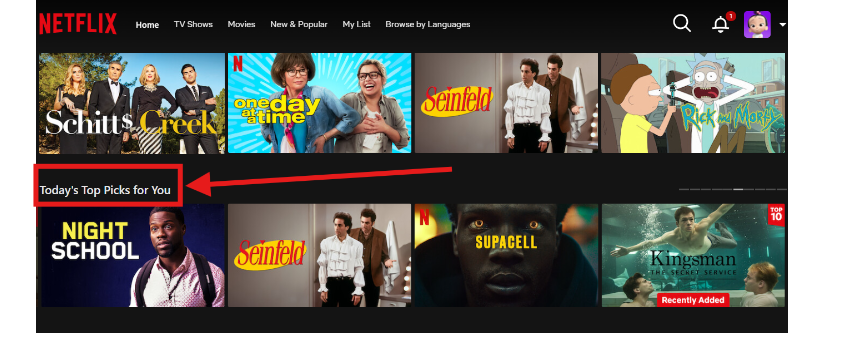
Segment is a great tool for comprehensive customer data management. Use it to collect data from multiple sources and consolidate it into a single platform to make it easier for you to create personalized experiences based on a holistic view of each customer.
3 Factors To Consider When Prioritizing An eCommerce Sales Strategy
Evaluating your business goals and needs is vital before diving into our tried-and-tested eCommerce sales strategies. Here’s what we recommend you do:
Understand Customer Behavior
Find out how your customers interact with your brand, what motivates their purchases, and what causes them to abandon carts. This will help if you’re looking for ways to select the most effective strategy.
For instance, unexpected fees and limited payment options often force customers to abandon their carts when they’re on the payment page.
To address the issue, you can offer multiple payment options like Google Pay and clearly communicate any additional costs like shipping fees.
Determine Available Resources
Some strategies require more resources, time, and marketing efforts than others. Evaluate your current capabilities to implement and sustain the chosen tactics effectively.
For example, if you have limited manpower, you can optimize your product pages to boost your conversions. This is a high-impact strategy that can be implemented relatively quickly compared to a more resource-intensive tactic like building a dedicated SEO team.
Evaluate Market Trends
Monitor industry trends and competitor activities. Make sure your strategies align with them because doing so will offer you the results you desire. To do this, participate in relevant forums or attend webinars. You should also subscribe to trusted business news websites like Forbes.
Conclusion
It’s time for you to put our tried-and-tested eCommerce sales strategies into action. Assess your resources and goals to select 1 or 2 that align well with them right now and take action.
But make sure you continuously review your tactics to make sure they’re still working in your favor. See how each eCommerce sales strategy affects your customer’s experience from browsing to post-purchase.
To help you with this, use ReadyCloud to track your progress and refine your tactics based on real-time data. Stay agile, keep testing, and adapt to changing customer needs to drive growth and outpace the competition consistently. Contact our sales team today to learn how we can help you.
Share On:







